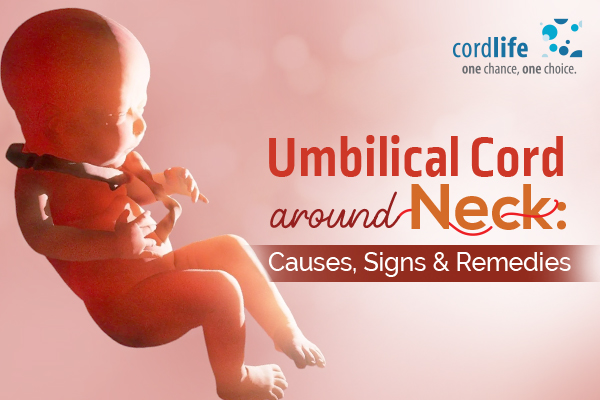Table of Contents
The umbilical cord, a rope-like structure, is the route to love and nurture your baby inside you. Your doctor will scan and see whether the umbilical cord in pregnancy is in good condition. The umbilical cord undergoes several complications. The umbilical cord complications are:
- Cord prolapse,
- single umbilical artery,
- umbilical cord wrapped around the baby’s neck and many more.
The nuchal cord is when the baby inside you wraps the umbilical cord around the neck completely. In fact, the nuchal cord is common in 12% of pregnancies between 24 to 26 weeks.
What is a Nuchal Cord Around the Neck?
A loop forms when your baby wraps the umbilical cord around the neck more than once. This condition is the nuchal cord around the neck. This loop can be loose or tight and is of two types – A and B.
- Type A is the unlocked cords which are free-moving.
- Type B cannot be undone and is tight, which ends up as a true knot. According to research, type B of the nuchal cord occurs in 1 out of 2000 births. The cord is so tight in Type B that the blood flow cuts off and becomes life-threatening for the developing baby.
What Makes the Baby Wrap the Cord Around the Neck?
There are several reasons that your unborn baby wraps the cord around his or her neck. They are:
Baby Movements
From the 16th week of your pregnancy, the baby moves around inside you. Especially during this time, your baby moves his or her limbs in a coordinated way. You may not feel these movements later on. But you can see your baby’s acrobatics while you’re undergoing your prenatal check-ups. With the progression of your pregnancy, these movements become more pronounced. You might at times feel that your baby is kickboxing inside you. The baby wraps the umbilical cord around the neck as a result of these movements.
Insufficient Wharton’s Jelly
Wharton’s Jelly protects the umbilical cord. The cord has three blood vessels and one vein. This jelly is there to keep your baby safe, no matter how much he or she moves. Insufficient Wharton’s Jelly is one of the reasons for the baby to wrap the cord around the neck during birth.
Miscellaneous Factors
- If you are pregnant with twins or multiples,
- If you are pregnant with excessive amniotic fluid, and
- If you are pregnant with a lengthy cord, and with a poor structure are some of the reasons for the nuchal cord. Nuchal cords are usually not that dangerous. Till your doctor finds this complication he would not mention it. Having said that even with a nuchal cord your baby might be born completely fine.
What are the Symptoms of the Cord Around the Baby’s Neck?
There are no proven symptoms of the presence of the cord around the neck of the baby. During pregnancy and labour, the doctor monitors every aspect of the foetus. He or she checks the foetal heartbeat, as the blood flow will reduce due to the nuchal cord around the neck of your baby. Moreover, if your baby seems to be moving less after 37 weeks of pregnancy, it could be a warning sign of a nuchal cord. So after the 37th week, your doctor will keep a check of the respiration of the baby inside you.
What Are the Ways to Treat Nuchal Cord?
Studies claim, there’s a possibility of at least 1 in utero foetal death, in the 16th week4. Well! The chances of stillbirth may be very less. But the cord around the neck at birth which reduces the blood flow may give rise to birth defects in babies. It may also lead to neurological problems like cerebral palsy. The doctor watches you during pregnancy to prevent you from nuchal cord complications. If there is Type B or double nuchal chord your doctor will suggest you an emergency c-section. (Double nuchal cord is when the baby wraps the cord twice around his or her neck).
With loose nuchal chords you may not need an emergency C- section and your baby may be born with cord around the neck. The doctor can also unwrap the cord after the baby’s born. Once you give birth to your baby, the doctors cut the umbilical cord. Cutting of the umbilical cord after delivery is harmless and painless. If you opt for cord blood banking, your caregiver will collect the cord blood. The cord blood is sent it to the labs for quality testing, processing, and stem cell preservation.
